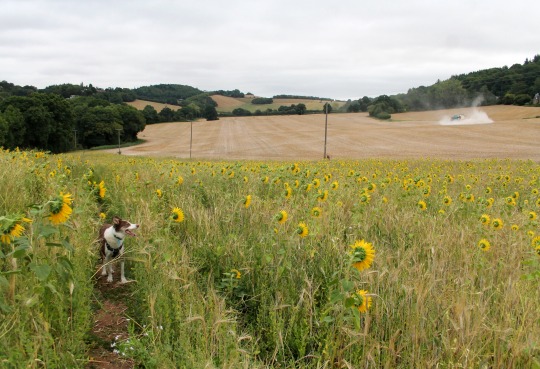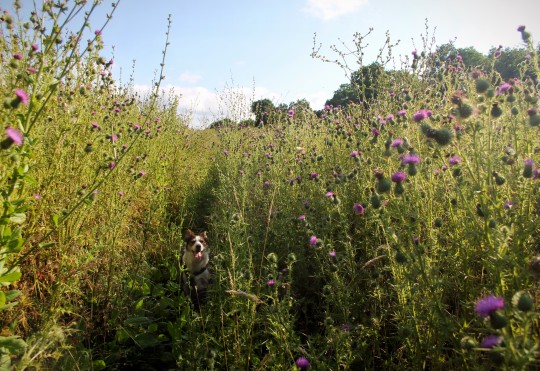#Soil Improvement
Explore tagged Tumblr posts
Text

Looking to improve your garden's overall appearance? Milton mulch provides a multitude of benefits such as retaining moisture, regulating soil temperature, and preventing weed growth. Explore Mulch Pros Landscape Supply versatile collection of mulch types and colours to elevate your landscaping game today. Visit now to know more.
0 notes
Text
Gardening Services in London
Gardening is a rewarding and fulfilling hobby that allows you to connect with nature and enjoy the fruits of your labour. While gardening can be enjoyable, one of the most crucial factors for achieving success is having healthy soil. For more information about Gardening tips, visit Gardening Services in London.
1 note
·
View note
Text
If you were a grower, and I told you there was one thing, above all else, that would make your land better, and that you could grow more food on the same land, using the same rainfall, on the same earth that you currently steward, using less inputs – meaning it would cost you less – would you do it?
"Soil: The incredible story of what keeps the earth, and us, healthy" - Matthew Evans
#book quotes#soil#matthew evans#nonfiction#grower#soil improvement#food growth#food production#rainfall#steward#input#questions
1 note
·
View note
Text
They make the ground better for themselves, and the plants that follow.
"Soil: The incredible story of what keeps the earth, and us, healthy" - Matthew Evans
#book quote#soil#matthew evans#nonfiction#legumes#fabaceae#nitrogen fixation#plants#soil health#soil improvement
0 notes
Text
Overexcavation and Replacement in Ground Improvement: A Comprehensive Overview
Introduction: Ground improvement techniques play a pivotal role in civil engineering projects where the existing soil conditions are not suitable for supporting structures or foundations. This article explores the basic concepts, suitability, applications, advantages, and limitations of overexcavation and replacement in ground improvement. Source: Freepik Basic Concept: Overexcavation and…

View On WordPress
#Bearing Capacity#Expansive clays#Foundation#Geomaterial#Ground Improvement#Increased Stability#Overexcavation#Poor soil#Replacement#Settlement#Soil improvement
0 notes
Text
Unlocking the Secrets to Thriving Gardens: Mastering Soil Improvement for Optimal Health and Fertility

Whether you are a novice or an experienced gardener, your plants’ health and yield potential may depend on the quality of your soil. With the right knowledge and effort, you can turn your garden into a fertile oasis of abundant growth and yield. Soil improvement is the key to success. In this ultimate guide, you’ll discover the principles and tips you need to know for creating or enhancing soil to make your dream garden a reality. With helpful flora- and soil-enhancing advice, you will have the confidence to tackle any challenge - from correcting nutrient imbalances to revitalizing a lawn. Enter the world of gardening with confidence - read on for the ultimate guide to soil improvement for healthier and more fertile gardens.
Soil Improvement: The Ultimate Guide For Healthy And Fertile Gardens
Welcome, green thumbs and gardening enthusiasts, to the ultimate guide for soil improvement! Whether you're a seasoned gardener or just starting out, understanding the intricacies of soil health is crucial for the success of your plants. So, grab your shovel and let's dig deep into the world of soil!
The Dirty Truth About Soil
Garden soil is the holy grail for plants, providing them with nutrients, water, and support. But have you ever stopped to ponder the complexity of this seemingly humble mix of dirt? Soil is a living ecosystem, teeming with organisms crucial to plant growth. It's the foundation upon which your garden thrives, which is why it's essential to ensure its health and fertility.
Unraveling the Soil Composition
Soil is a blend of four primary components: minerals, organic matter, water, and air. The mineral component originates from weathered rocks and provides essential nutrients like nitrogen, phosphorus, and potassium. Organic matter, such as decomposed leaves and plant debris, adds crucial nutrients and improves the soil structure. Water and air create the perfect balance, ensuring plants get the hydration and oxygen they need to flourish.
Cracking the Code of Soil Types
Not all soil is created equal, and understanding its type is vital for effective gardening. The three main soil types are sandy, clay, and loamy. Sandy soil, with its coarse texture, drains quickly but struggles to retain nutrients. On the other hand, clay soil is rich in nutrients but tends to be heavy and prone to compaction. Loamy soil strikes the perfect balance, with a mix of sand, silt, and clay that provides excellent drainage and nutrient retention.
Cultivating Soil Improvement Techniques
Now that we've unearthed the basics, let's dive into some tried and true techniques to improve your garden soil. Remember, building healthy soil takes time and effort, but the results are well worth it!
1. Composting: Black Gold for Your Garden
Composting is a gardener's secret weapon. It's the magical process of converting kitchen scraps and garden waste into nutrient-rich organic matter. Just imagine transforming banana peels and coffee grounds into black gold for your plants! Start a compost pile or invest in a compost bin, and watch as your garden thrives with the help of this natural fertilizer.
2. Mulching: A Blanket for Your Soil
Mulching is like tucking your soil in with a cozy blanket. It involves adding a layer of organic material, such as wood chips or straw, to the surface of the soil. Mulch helps retain moisture, suppresses weeds, and regulates soil temperature. Plus, as the mulch breaks down, it adds valuable nutrients to the soil.
3. Cover Cropping: Nature's Soil Builders
Cover cropping is a practice that involves sowing specific plants to improve soil structure and fertility. Legumes, like clover or vetch, add nitrogen to the soil, while deep-rooted plants, such as daikon radishes, help break up compacted soil. Cover crops also protect the soil from erosion and weed invasion, making them a win-win for your garden.
4. Vermicomposting: Worms as Garden Allies
Who would have thought that worms could be your garden's best friends? Vermicomposting is the process of using earthworms to break down organic matter. These tireless little workers consume kitchen scraps and produce nutrient-rich castings, also known as worm poop! Adding vermicompost to your soil enhances its structure, aeration, and nutrient content.
5. Green Manure: Not Your Ordinary Manure
Green manure might sound like something you'd find in a quirky farmer's dictionary, but it's a fantastic technique for soil improvement. It involves growing specific plants, like clover or alfalfa, and then tilling them into the soil before they mature. This green matter adds organic material and nutrients while also preventing weed growth. It's like a buffet for your soil, providing a feast of goodness for your plants.
The Pitfalls to Avoid
As we journey towards soil improvement, there are a few pitfalls we should sidestep. Remember, knowledge is power, and armed with this understanding, your garden will thrive!
1. Overwatering: Drowning Your Plants
While plants need water, overwatering can be detrimental. It leads to poor soil aeration, root rot, and the leaching of essential nutrients. So, be sure to learn your plants' water requirements and give them just the right amount of hydration to keep them happy.
2. Excessive Tilling: Disturbing the Peace
Tilling can be tempting when preparing your garden bed, but too much can disrupt the soil structure and harm beneficial organisms. Opt for minimal tilling to avoid disturbing the peace beneath the surface.
3. Ignoring Soil Testing: A Shot in the Dark
Soil testing is a gardener's secret weapon. It reveals the nutrient composition and pH level of your soil, allowing you to make informed decisions about fertilizers and amendments. Ignoring soil testing is like taking a shot in the dark – you might hit the target, but chances are you'll miss.
Soil: The Root of All Green
Congratulations, fellow green thumbs! By delving into the depths of soil improvement, you've unlocked the key to a thriving garden. Remember, healthy soil is the root of all green, providing the foundation for your plants to grow, blossom, and bear fruit. So, get your hands dirty, embrace the magic of composting, mulching, and cover cropping, and watch as your garden becomes an oasis of lush vegetation.
Learn more about gardening with Taim.io!
0 notes
Text

barry keoghan u lil freak i love u so much
#saltburn#barry keoghan#jacob elordi#oliver quick#felix catton#saltburn is ultimately a fucked up lil story about obsession and i love it so so much#the fact that barry improved the grave scene too just rubs my brain the right way#cause as i was sitting there i was like wow i hope he fucks the freshly turned soil#and he did#!!!#insane
8K notes
·
View notes
Text
What do you mean by Grouting in Construction?
Grouting in construction is the process of injecting a fluid material into voids or gaps in soil, rock, or structures to strengthen them or provide desired properties. It is used for foundation stabilization, tunnelling, dam rehabilitation, soil anchoring, and structural repairs.
Grouting involves injecting a mixture (grout) into the target area to fill voids, control water seepage, or enhance structural integrity. It improves the strength, stability, and durability of construction projects.
What are some applications of grouting in the field of construction?
Grouting is a very important process in the field of construction. Here are some common applications of grouting in construction:
1. Foundation Stabilization: Grouting is used to stabilize and strengthen the foundation of structures. It can fill voids and improve the load-bearing capacity of the soil beneath foundations, preventing settlement and improving overall stability.
2. Soil Improvement: Grouting can be used to improve the properties of weak or loose soils. It helps increase soil strength, reduce permeability, and enhance overall stability, allowing for the construction of structures in otherwise challenging ground conditions.
3. Tunneling and Underground Structures: Grouting is essential for tunnelling projects to control water ingress and stabilize surrounding soils or rocks. It can seal off water leaks, prevent soil movement, and create a stable environment for the excavation and construction of tunnels and underground structures.
4. Dam and Embankment Sealing: Grouting is used in dam and embankment construction to prevent water seepage and improve overall structural integrity. It involves injecting grout into potential pathways for water to reduce permeability and create an impermeable barrier.
5. Concrete Crack Repair: Grouting is employed to repair cracks in concrete structures such as buildings, bridges, and dams. It involves injecting grout into the cracks, which fills and seals them, restoring structural integrity and preventing further deterioration.
6. Anchoring and Post-Tensioning: Grouting is used to anchor and secure structural elements such as bolts, rods, and cables. It provides increased load-bearing capacity and stability for applications like rock or soil anchoring, post-tensioning of concrete, and securing structures against uplift or lateral forces.
7. Joint and Void Filling: Grouting is employed to fill voids, joints, or gaps in concrete structures. It ensures structural integrity, improves durability, and enhances resistance to water penetration. It is commonly used in precast concrete construction and infrastructure repair.
8. Groundwater Control: Grouting is used to control groundwater flow in construction projects, such as underground excavations or foundation construction in water-bearing soils. It involves injecting grout into the ground to create a barrier that reduces water inflow and stabilizes the excavation.
Read more
0 notes
Text

#obey me#lucifer#sources are telling me diavolo still hasn't done fuckall to improve the devildom soil
109 notes
·
View notes
Text
It's been a while.

#I'm sorry if you follow me for cj content; i simply like listening and not so much drawing it. oops.#Chonny Jash#HMS#HMSW#CJsoul#Soul#soil#art#digital art#doodle#also Darrel is there#Darrel#okay but like is Darrel transgender? i am genuinely confused about the chicken pls answer in the ask box#she blucka on my chook till I mucka#I'm so sorry#TSE#i guess#idfk#trident man do the silly#im fucking bored#but hey! mood is improving and meds are mellowing out! so there's that! hooray!! contentness!!!!#cccc
34 notes
·
View notes
Text
Why Smallholder Farmers in Western Kenya Are Championing Native Tree Restoration
Smallholders in Western Kenya strongly support native-tree restoration due to long-term benefits for landscape restoration, productivity and livelihoods, new research shows. Digital tools and community buy-in are successfully backing restoration projects A farmer waters seedlings along the Nzoia River in Siaya, Kenya. African nations have grand ambitions to green up landscapes with trees; the…
#afforestation#agroforestry#biodiversity#CGIAR Nature-Positive Solutions#Climate resilience#community engagement#desertification#digital tools#Diversity for Restoration#ecosystem restoration#environmental conservation#Food security#forest landscape restoration#Kenya tree-planting initiative#landscape restoration#livelihood improvement#My Farm Trees#native tree restoration#peer learning#policy interventions#reforestation#restoration initiatives#smallholder farmers#SOIL FERTILITY#sustainable agriculture#sustainable farming#tree diversity#tree planting#tree-based livelihoods#Western Kenya
13 notes
·
View notes
Text
There's a field at the far end of the local apple orchards, that has a public footpath running through it. We don't often go down there as it's off our usual little circuit but occasionally, for a change, we'll head over & explore. Last summer, the farmer had planted the field with sunflowers & you could walk through them. It was lovely, very pretty.

We'd not ventured there so far this summer & I was curious what was now growing in the Far Field, cause I could see it wasn't a regular crop, like wheat, or potatoes but I couldn't tell from a distance what it was.
So, today, we down to have a closer look. It's thistles! The entire field is a big old thistle forest. It's buzzing. Literally. So many bees!! There are stacks of bee hives up in the orchards & I'm guessing the thistles (& some other types of flowers, sprinkled among them) have been planted to provide food for pollinators?

Anyway, once I realised the field was a mass of prickly plants & stinging insects, I didn't feel overly enthused about walking down the very overgrown footpath. However, Flynn remembered there's a stream at the other end & he was determined to have a paddle, so off we went down a tunnel of thistles.
Flynn was fine - he's short enough to avoid the worst of the spikes & most of the bees. I followed very gingerly. Got scratched & prickled & poked by the plants but all I can say is that it's a good job our local bee population appears to be quite docile & relaxed about life because I definitely headbutted at least few of them on the way through & nobody stung me! So that was our Sunday afternoon adventure!

#bit naughty of the farmer to not leave more clearance for the footpath tbh#landowners have a duty to make sure any public footpaths across their land are accessible by walkers#and I'm not sure a tunnel of thistles counts as accessible!#although... I mean... we did make it to the stream & back in one piece#& I like that the thistles are attracting insects! saw plenty of bees & butterflies#I think thistles improve soil too? not sure#flynn#border collie#dog#summer#field#farmland#sunflowers#thistles#england
50 notes
·
View notes
Text
Also there is a square foot BLOCK of condensed potting soil that I removed from a pot to add a bunch of coarser material to that is sitting on my back deck on a tarp because I need it to dry out. That's what my poor ferns were languishing in. The pot was half the weight by the time I finished. Horrific. No wonder my poor elephant ear died.
#if this does improve things I will get a new elephant ear and replace it but holy FUCK#i dumped the pot out and was like 'hahahaha what the fuck'#anyway check your soil density folks.#first house plant first aid tip is distilled water second is 'are your plant's roots being crushed to death'#root rot and spider mites are also options but like..... look. I've never had those.
13 notes
·
View notes
Text

Say good bye to hand made bricks
Say good bye to hand made bricks, just buy and produce clay brick with SnPC mobile brick making machine.
SNPC Machine pvt ltd is the only manufacturer of fully automatic mobile brick making machines in the world known as a factory of brick on wheels. There are 04 models in fully automatic mobile brick making machine as given-BMM160, BMM410, BMM310 and SBM180 with production capacities according to their sizes and fuel consumption. All the fully automatic brick making machines by the snpc machines India are the mobile or portable units, which given freedom to produce anywhere- anytime- any quantity.
#snpcmachine#brick making machine#clay brick making machine#red soil brick#bmm410#BMM310#construction machinery#architecture#metal working#home improvement#fully automatic#mobile brick making machine
8 notes
·
View notes
Text
When picking up an escaped quail yesterday, I realized how much larger my g3 and g4 quail are compared to the ogs. This has actually created an unanticipated problem where the ogs are inadvertently getting bullied solely because their offspring are almost twice their size and push them off places. Either need to make them a retirement pen or find them homes that don't mind a lack of eggs. On the flipside, I introduced some 3 week old babies into the colony to get more color variety in there and only 1 gen3 hen took a chance to pull rank (guessing she's low on the totem pole) vs 2 of the og hens. So they're getting bigger but they're also getting better mannered and nicer.
#my bird talks#I'm pleased with the size/temperament improvements in a few generations#I'm not the fastest or largest breeder#I'm very reluctant to breed a lot because I'm not big on culling#as I don't eat the culled birds and no longer have animals that would eat them#I do compost them so they go back into the bugs/soil/plants if I need to do a mercy cull for medical reasons#and I do sell [live] BBQ packs to others who would like a nice quail dinner#but the amount of food they eat/space they take up/noise vs $ isn't worth raising them up for other people#I already have at least 4 roosters from the test hatches#Biggie is a SLB with a fantastic temperament/size#shame about his color#but if he stays nice and quiet I plan to keep him as a spare breeder#the other 3 aren't anything special#there are 5 that are not feather sexable - hopefully 3 or 4 are hens#2 are very strange dilutes so I'm hoping they're hens
3 notes
·
View notes
Text
It’s true and important to point out that landback is about a return to Indigenous sovereignty and doesn’t mean that everyone else has to leave but it’s also true that land back + the fall of the American empire will probably not happen without significantly jeopardizing the safety of the average North American, and the American government/empire will be to blame for that because it won’t give up power peacefully
#like we already live in a world where lots of innocent people die#if that’s ever going to change (or significantly improve#even if it’s not a utopia)#then the fact that there hasn’t been a war on US soil in over a century will likely change#we can point out the hypocrisy of many Israeli leftists but it’s also important to think about how we’ll respond to something similar#on an emotional/visceral level to ensure that those of us with certain forms of privilege don’t abandon our values#<- I’m aware that many of my followers aren’t usamerican/Canadian just referring to myself and those of us who are
3 notes
·
View notes